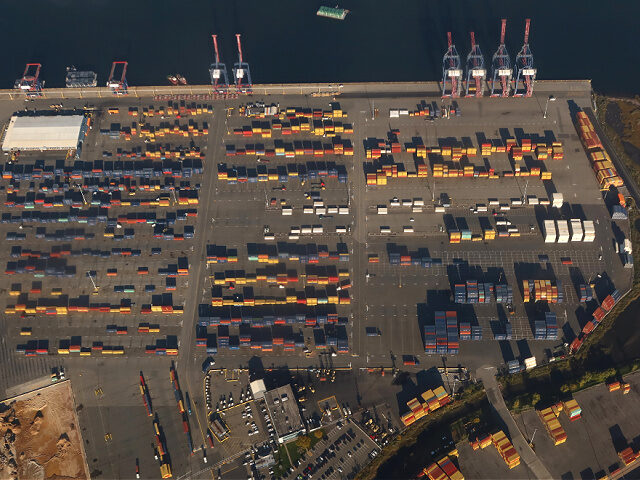The Port of New York and New Jersey outperformed the Port of Los Angeles and other California ports in trade for the month of October due to ongoing labor disputes on the West Coast.
The Port of New York saw a 19 percent increase in its handling of twenty-foot equivalent units (TEUs) for the month of October compared to 2019, roughly 792,548 TEUs. The Port of Los Angeles, however, has trailed sharply behind mostly due to stalled negotiations with the unions and pending labor strikes, according to CNBC.
“Logistics managers have been saying for months that trade was being redirected due to the labor issues at West Coast ports and several links in the transportation network, including rails, have begun using new models to route shipments across the country based on changes in port usage,” noted the outlet.
“While talks between the International Longshore and Warehouse Union (ILWU) and the Pacific Maritime Association (PMA) are expected to resume as soon as this week, the resumption offers little clarity on the progress of negotiations,” it added.
A spokesperson with Everstream Analytics warned that the two sides do not appear to have come any closer to reaching an agreement even after over six months of negotiations. In the Port of Oakland, for instance, workers with the ILWU have performed as many as two walkouts since the start of November. Even with the decrease in cargo arrivals, productivity has overall decreased in the ports, specifically Seattle and Oakland, due to the labor disputes, with some shipments being rerouted to Canada.

In an aerial view, container ships are anchored by the ports of Long Beach and Los Angeles as they wait to offload on September 20, 2021, near Los Angeles, California. (Photo by Mario Tama/Getty Images)
Josh Brazil, vice president of supply chain insights for Project44, which tracks the shipments, told CNBC that New York and New Jersey have seen an increase in shipments due to the fact that shippers are now actively avoiding the West Coast ports.
By subscribing, you agree to our terms of use & privacy policy. You will receive email marketing messages from Breitbart News Network to the email you provide. You may unsubscribe at any time.
“Firstly, shippers are still avoiding the West Coast to mitigate the risk of labor strikes at LA and Long Beach. Secondly, European imports to the East Coast are also very high,” said Brazil.
Paul Brashier, vice president at ITS Logistics, said that rerouting of West Coast shipments to the East Coast ports will put a strain on railway services to transport the goods from coast to coast.
“We are experiencing challenges with exports being brought to West Coast ports from the east via rail,” said Brashier. “Those challenges are container high dwell time and the volumes in storage.”
“Containers are missing the original vessels and rolling to the next vessel,” he added. “The increased transit times on rail and the limited amount of vessels calling West Coast ports because of volumes declining due to potential labor unrest are the largest contributing factor to the volume of extended dwell containers.”

COMMENTS
Please let us know if you're having issues with commenting.